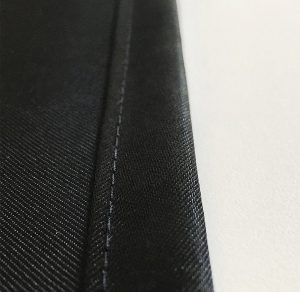
Shoe bag Value
“Cheap shoe bags”. This seems a very commonly used Google keyword, but what does that even mean?
Who would not want to spend less if there is such possibility? I guess no one. Be careful though! Cheap product and low value product are two very different things!
A shoe bag is made of four components: Fabric, Construction, String of closure and Printing. These are the four "pillars" which determine the true value of a shoe bag..
For instance, if a shoe bags costs 1 euro, the average hypothetical price for each pillar would be € 0,25.
As a matter of fact, any industry out there expects a buyer to purchase a product without defects and pay the right amount for it. A buyer has all the legal rights to ask for a discount if he/she points out some visible defects or artefacts even if these don't necessarily cause functional issues. So why would you pay full price when its value is objectively lower?
The four "Pillars" of Value
Fabric
Let's set a scenario where a customer buys a collar Ralph Lauren polo shirt. The customer reaches the check out and says: "Excuse me. I noticed this shirt has quite a few problems with the weaving and printing. I will purchase it only for a lower price." That is totally normal. A customer want to pay for a well executed product which corresponds to its value. All high-end brands certainly do not accept their product with defects.
Printing
Same thing with the printing. None of our clients wants to pay full price for some ink-spilled, low quality colour and not properly positioned printing. Even the best production companies in the world happen to produce one or two units every thStessa cosa vale per la stampa. Nessuno dei nostri clienti vuole pagare una stampa a prezzo pieno se questa è sbiadita, sbavata o fuori posizione. Anche alle migliori aziende del mondo capita di produrre 1 o 2 articoli ogni 1000 con difetti. Se questo dovesse capitare ci sono due strade: 1) sostituzione immediata dei prodotti difettosi. 2) se i tempi di consegna dovessero essere troppo stretti, un cliente ha tutto il diritto di chiedere uno sconto del 25% (€ 0,25), il valore della stampa viene a mancare.
String of Closure
This is my favourite part! Once your customer buys your pair of shoes, he/she goes home and opens the box. Let's go beyond the visible aesthetic problems: who is ever going to check the inner part of the sewed border on the opening side of the bag? In other words, the tunnel where the string of closure goes through. This is actually an excellent hideout to use less string than the bag requires, roughly stitch it onto the inner side of the bag border and sell the shoe bag at the same price. As a result, your shoe bag would have only 60% of its string closure instead of all necessary length. Plus, you will see the string (or ribbon) cannot slide around - of course not! It's stitched onto the bag fabric! Why would I pay those 0,25 euros and get only 60% of its component?
Construction
The quick litmus test to check how a shoe bag is built is to fold it horizontally in two sections. You will be able to check if the corners are perfectly matching or not. "Come on...who cares? who is ever going to fold a shoe bag this way? and what for?". Nonetheless, it is not just a matter of aesthetic perspective, but it is also a matter of price per quantity of material supplied. If a shoe bag isn't properly built, there is a very high percentage of fabric discard when forcing the fabric sections into position and make the look like it is properly constructed. Therefore, the stitching lines are forced into position and often visibly not straight Full price? No, thank you!






